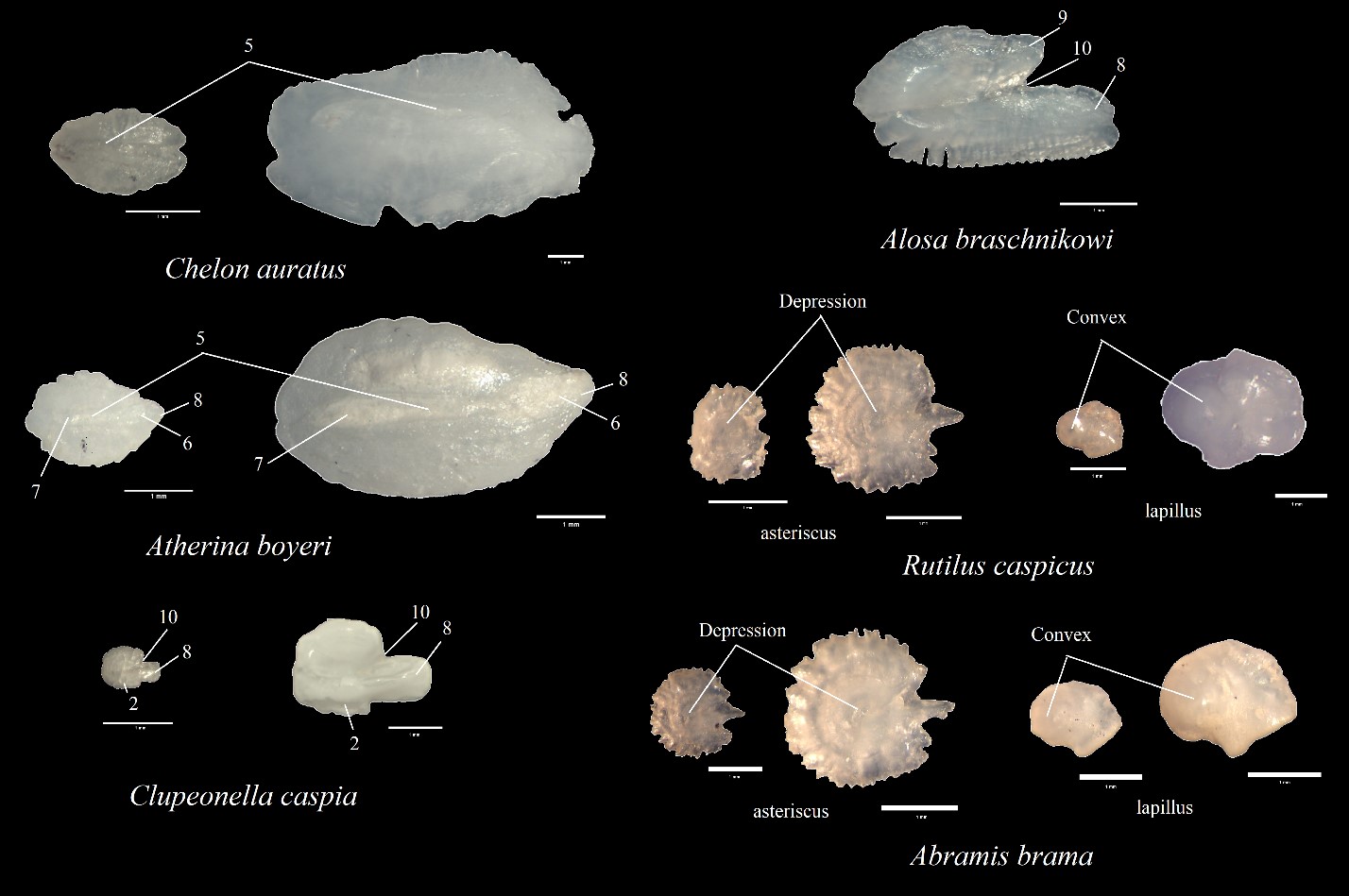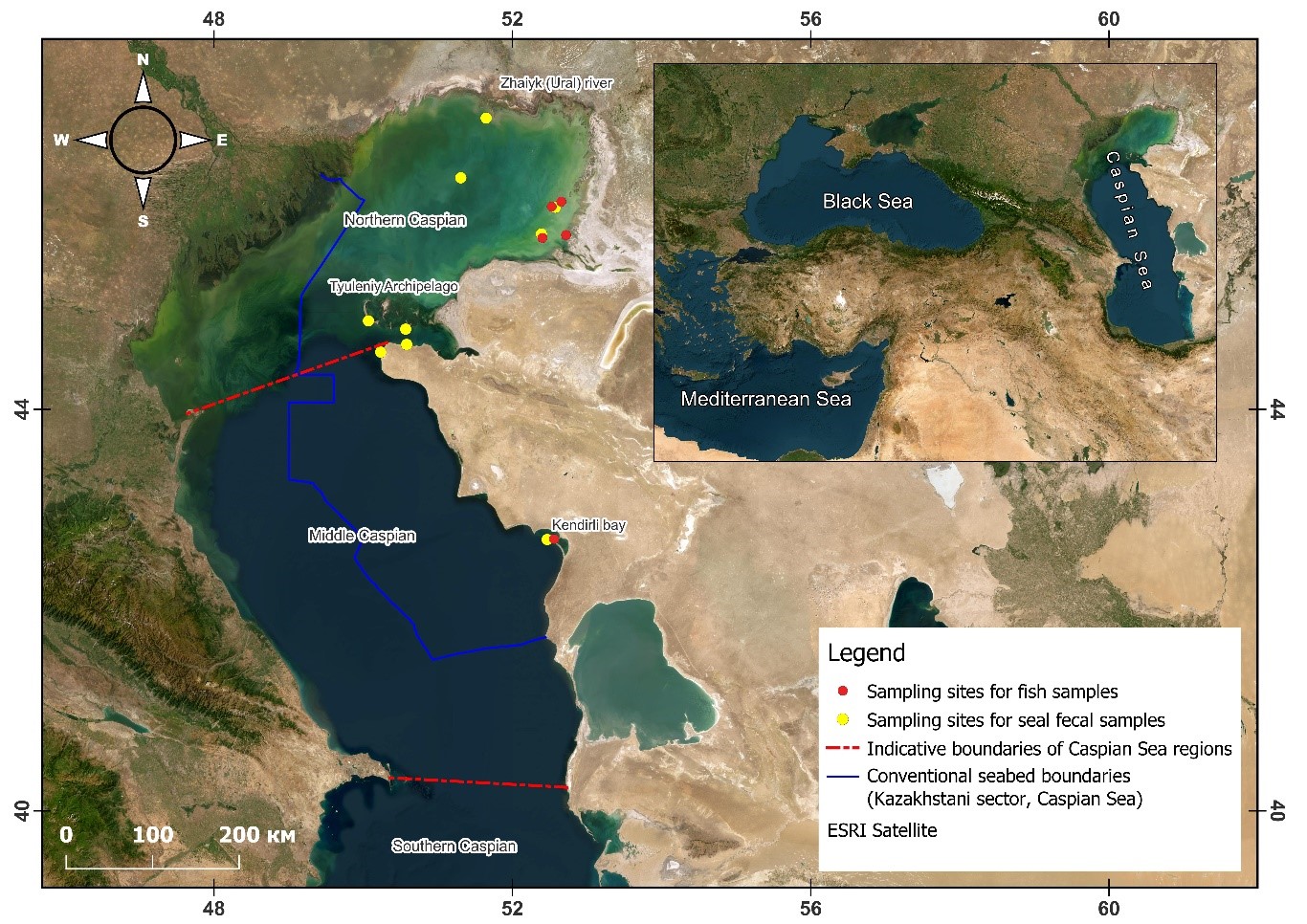Assessment of the Fish Diet of the Caspian Seal (Pusa caspica) During Haul Out Periods on Island Sites: Results, Challenges, and Perspectives
https://www.frontiersin.org/articles/10.3389/fmars.2025.1565902
The Caspian seal is an endemic and endangered species of the Caspian Sea. One of the major threats to its survival is the decline of food resources. Pollution, sea regression, overfishing, and the introduction of alien species have negatively affected its feeding base.
In this study, for the first time, the diet of Caspian seals during spring–autumn haul-out periods on island rookeries (2015–2022) was thoroughly analyzed based on fish otoliths in fecal samples. For this purpose, otoliths of 14 fish species from 5 families of the Caspian Sea were described for the first time. A total of 8,630 otoliths were analyzed. As a result, the diet of the Caspian seal was found to consist of: 79.34% gobies, 15.99% atherines, with herring, sprat, cyprinids, and mullets also present.
Dietary diversity was higher in the deeper Middle Caspian. The authors emphasize the importance of building an otolith reference database and applying DNA barcoding for more precise species identification.
This research contributes to the development of conservation measures for the critical habitats of the endangered Caspian seal.
Шагилбаев А.У. – заведующий лабораторией Института гидробиологии и экологии

